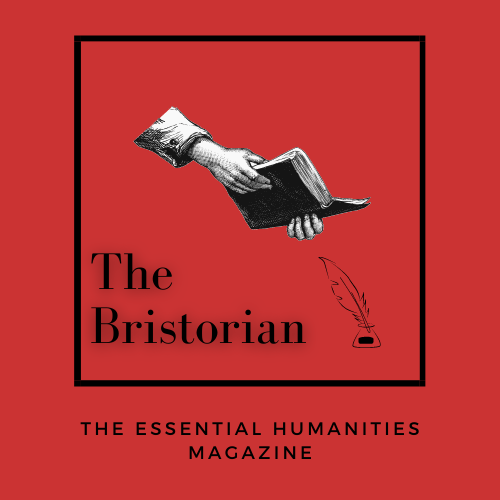‘We’re Thieves In a World That Don’t Want Us No More.’: Red Dead Redemption 2 and the Old West
By Ben Bryant, 3rd Year History
One of the many stunning views of Red Dead Redemption 2, featuring Arthur Morgan and his trusty steed. Credit: Rockstar Games
‘By 1899, the age of outlaws and gunslingers was at an end. America was becoming a land of laws.’ These are the first words that greet players once they start Rockstar Games’ 2018 masterpiece, Red Dead Redemption 2. The player finds themselves in the shoes of Arthur Morgan, a man who is outwardly cold and sarcastic but shows himself to be a selfless, loyal member of his gang, led by the charismatic Dutch van der Linde. After a heist on a ferry goes horribly wrong, the gang find themselves in the snowy mountains of Colter, evading pursuit by the law. The player never learns exactly what happened back on the ferry, but one thing is made abundantly clear: the Van der Linde gang’s way of life is coming to an end.
Whilst the locations in Red Dead Redemption 2 have fictional names, every facet of the world is rooted in history. The juxtaposition of Van Horn, a lifeless trading post, against the bustling city of Saint Denis perfectly exemplifies the transformation of the United States in the late-20th century. In 1890, the US Census Bureau announced the closing of the American frontier, an official statement that there were no longer any large areas of unsettled land in the American West. Manifest Destiny, the expansion of American territory, had reached its natural end with the establishment of towns, mining territories and ranches across the continent. This had significant impacts on the Native American population, who were forced onto reservations or homesteads, leading to the racial tensions that the player can see in Red Dead Redemption 2.
Perhaps the best representation of the decline of the Wild West can be seen in Arthur’s encounters with the Wapiti tribe. As the story rapidly advances towards its conclusion, Arthur and the Van der Linde gang become more involved with a pacifistic Native American named Rains Fall, and his son, Eagle Flies. During the events of the game, Rains Fall is constantly battling the US Army, who are attempting to drive the Wapiti from their reservation to access the oil deposits beneath it.
In this, Arthur sees his own plight. Both the Wapiti and the Van der Linde gang are facing the destruction of their way of life, leading Arthur to try and help. This is not Arthur Morgan being portrayed as a white saviour, as he never attempts to supersede Rains Fall or the Wapiti, nor does he openly compare their issues or presume to know better. Arthur simply attempts to do what he does best: help others find peace in the wake of a changing world.
The Van Der Linde Gang clustered around a campfire. Credit: Rockstar Games
Arthur is just one of an assorted, ragtag band of misfits, made up of a variety of races, genders and ages. This diverse upbringing is exhibited in the player’s interactions with the world. Although you are always presented with a choice, Rockstar Games actively push the player into being honourable and kind. Arthur is outwardly disgusted by racism and, in just one of the many interactions that you can have, supports an advocate of women’s suffrage. These encounters are largely contextual, yet they create both a likeable, multifaceted protagonist, and a more authentic setting, one that shows the player the gradually transforming world that they are inhabiting.
Red Dead Redemption 2’s setting is one plagued by governmental agents and state intervention. One of the game’s many antagonistic groups, the Pinkertons, take their name directly from the American private policing agency established in the 1850s. The Pinkertons pursue the Van der Linde gang across the entire game and perfectly exemplify modernisation. Dressed in formal wear and bowler hats, the Pinkertons personify ‘progress’ and change, repressing the Van der Linde gang’s gunslinging lifestyle. Survival is a core theme of Red Dead Redemption 2, and the Pinkertons consistently aim to crush the remnants of a dying lifestyle, embodying the decline of the Old West.
Arthur’s relationship with the game’s deuteragonist, John Marston, incorporates the theme of a lifestyle’s decline during almost its entire time on screen. Particularly when the game enters its final chapter, Arthur chooses to prioritise saving John after a failed bank heist rather than the gang he is becoming so disillusioned with. Despite Dutch’s disapproval, Arthur chooses to prioritise morality over loyalty, helping his friend and brother escape the life that they once held so dear, in the hopes of securing a comfortable, prosperous future for John.
The Van Der Linde Gang march on a plantation house in the game’s third chapter. Credit: Rockstar Games
Red Dead Redemption 2 is a story of loss and betrayal, of violence and conflict, and of love and family. Rockstar Games and their incredible team of actors and developers created a world that is both historically representative and absolutely believable, tackling a variety of issues and making a cast of characters that are equal parts loved and hated. To not become emotionally invested in the tale of Arthur Morgan and the decline of the Old West is impossible. Through its plot and clever use of space and place the game represents the death of the American frontier. It is hard not to resonate with Arthur’s own words that by this point the Van der Linde gang are ‘more ghosts than people’, remnants of days gone by.
Edited by Scarlett Bantin
The Fourth Bristorian print edition launches on Monday the 19th of May 2025 at 5pm in the Arts Complex Breakout Space.
Fancy writing or editing for The Bristorian? We always welcome commissions and new talent, and we will be recruiting for our 2025/26 team soon - keep an eye on our social media and your emails!



